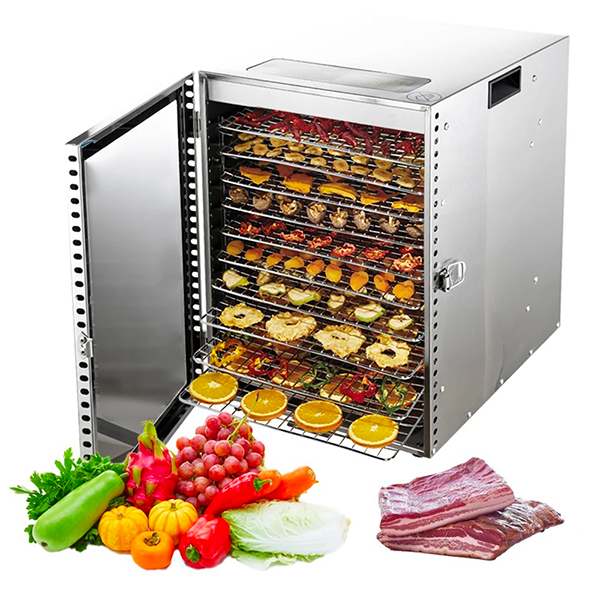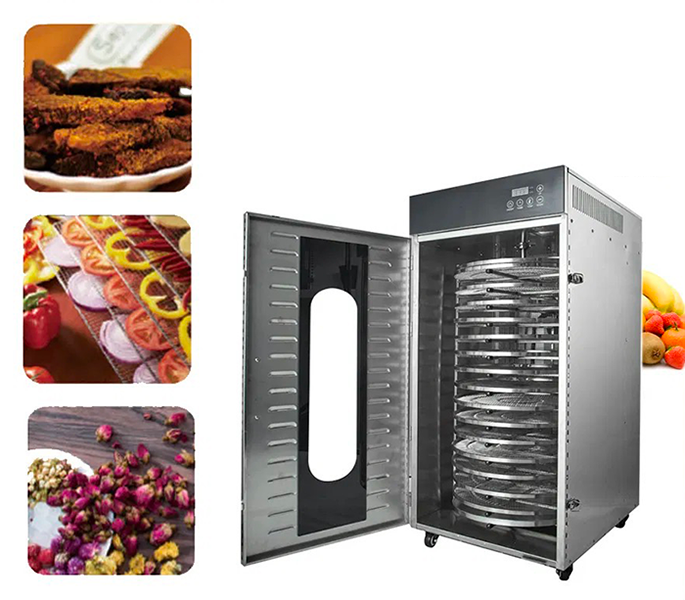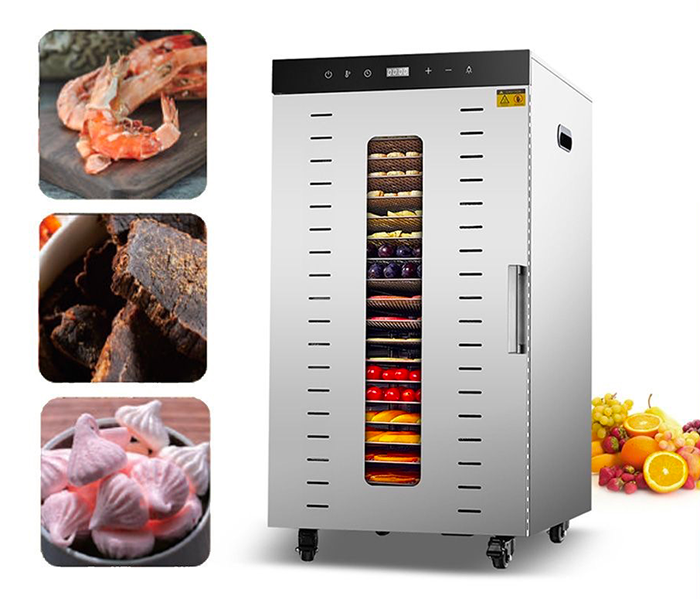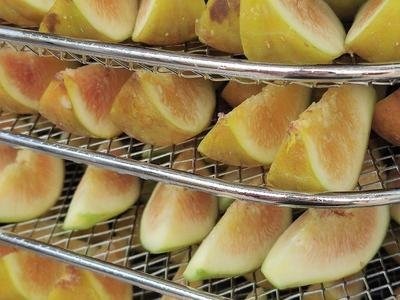
Content Menu
● Understanding Food Drying
● What Is a Heat Pump Dryer?
>> Advantages of Heat Pump Dryers
>> Disadvantages of Heat Pump Dryers
● What Is a Dehumidifier?
>> Advantages of Dehumidifiers
>> Disadvantages of Dehumidifiers
● Heat Pump Dryer vs Dehumidifier
● Applications in Food Drying
● The Role of Temperature and Humidity in Food Drying
● Best Practices for Using Heat Pump Dryers and Dehumidifiers
● Conclusion
● FAQ
>> 1. What foods can be dried using a heat pump dryer?
>> 2. Can I use a dehumidifier for drying foods?
>> 3. How much energy does a heat pump dryer consume?
>> 4. Is it possible to combine both devices for better results?
>> 5. What maintenance do these machines require?
In the world of food drying, two popular technologies often come into play: heat pump dryers and dehumidifiers. Both are essential for preserving food by removing moisture, but they operate on different principles and serve distinct purposes. This article will explore the differences between these two devices, their applications in food drying, and their benefits and drawbacks. We will also include visual aids to enhance understanding.
Understanding Food Drying
Before diving into the specifics of heat pump dryers and dehumidifiers, it is essential to understand the process of food drying. Food drying is a method of preserving food by reducing its moisture content, which inhibits the growth of bacteria, yeasts, and molds. This process can be achieved through various methods, including air drying, sun drying, and using specialized equipment like dehydrators, heat pump dryers, and dehumidifiers.
The importance of moisture control in food preservation cannot be overstated. By lowering the moisture content in food products, we can significantly extend their shelf life while retaining nutritional value and flavor. The drying process also enhances the concentration of flavors in certain foods, making them more appealing to consumers.

What Is a Heat Pump Dryer?
A heat pump dryer is an advanced appliance that uses a refrigeration cycle to extract moisture from food. It operates similarly to a refrigerator but in reverse. Here's how it works:
1. Air Intake: The dryer draws in ambient air.
2. Heat Exchange: The air passes over a heat exchanger where it is heated.
3. Drying Process: The warm air then circulates around the food items, evaporating moisture.
4. Condensation: The moisture-laden air is then passed through a condenser where the moisture condenses back into water.
5. Heat Recovery: The remaining dry air is reheated and recirculated for further drying.
This cycle continues until the desired moisture content is achieved in the food products.
Advantages of Heat Pump Dryers
- Energy Efficiency: Heat pump dryers are highly energy-efficient compared to traditional dryers because they recycle heat.
- Temperature Control: They allow for precise temperature control, which is crucial for sensitive foods that may degrade at high temperatures.
- Versatility: Suitable for various types of food, including fruits, vegetables, meats, and herbs.
- Quality Preservation: By maintaining lower temperatures during the drying process, heat pump dryers help preserve the nutritional quality and flavor of foods better than conventional methods.
Disadvantages of Heat Pump Dryers
- Initial Cost: They tend to be more expensive upfront than other drying methods due to their advanced technology.
- Space Requirements: Heat pump dryers can require more space due to their size and ventilation needs.
- Complexity: Their advanced features may require more technical knowledge for operation and maintenance compared to simpler devices.
What Is a Dehumidifier?
A dehumidifier is a device designed to reduce humidity levels in the air. It works by drawing in humid air and passing it over cold coils, which causes moisture to condense and collect in a reservoir or drain away. While not specifically designed for food drying, dehumidifiers can be used in conjunction with other drying methods.
Advantages of Dehumidifiers
- Cost-Effective: Generally less expensive than heat pump dryers, making them accessible for home users or small businesses.
- Simplicity: Easy to operate with straightforward controls that do not require specialized knowledge.
- Portable Options: Many models are portable and can be moved easily from one location to another.
- Humidity Control: They are effective at maintaining optimal humidity levels in storage areas or during the drying process when combined with other methods.
Disadvantages of Dehumidifiers
- Limited Drying Capability: They may not dry food as effectively as heat pump dryers due to their lack of heat application during the drying process.
- Temperature Control: Lack of precise temperature control can lead to uneven drying results.
- Slow Process: Dehumidifiers may take longer to achieve the desired dryness compared to dedicated food dryers.
Heat Pump Dryer vs Dehumidifier
To better understand the differences between these two devices, let's compare them side by side:
| Feature | Heat Pump Dryer | Dehumidifier |
| Purpose | Specifically designed for drying food | Reduces humidity in the air |
| Energy Efficiency | Highly energy-efficient | Generally energy-efficient |
| Temperature Control | Precise control over temperature | Limited control |
| Initial Cost | Higher upfront cost | Lower upfront cost |
| Drying Capability | Superior for food drying | Limited effectiveness |
| Versatility | Suitable for various food types | Not specifically designed for food |
Applications in Food Drying
Both heat pump dryers and dehumidifiers have their place in the food industry:
- Heat Pump Dryers are ideal for large-scale operations where consistent quality and efficiency are paramount. They are often used by manufacturers who need to dry fruits like apples and apricots or vegetables like carrots and peas. In addition to commercial applications, they are also suitable for home users who want professional-quality dried foods.
- Dehumidifiers, on the other hand, can be useful in smaller operations or home settings where humidity control is necessary but not specifically focused on drying food. They can help maintain optimal conditions during the drying process when combined with other methods. For instance, using a dehumidifier alongside traditional sun-drying can accelerate the process by reducing ambient humidity levels.

The Role of Temperature and Humidity in Food Drying
Understanding how temperature and humidity affect food drying is crucial for achieving optimal results:
- Temperature Control: Different foods require different temperatures for effective drying. For example, fruits typically dry best at lower temperatures (around 130°F - 140°F), while meats may need higher temperatures (around 160°F) to ensure safety from pathogens.
- Humidity Levels: High humidity can slow down or even halt the drying process. In environments with high humidity levels, using a dehumidifier can significantly improve drying efficiency by maintaining lower humidity levels around the food items being dried.
Best Practices for Using Heat Pump Dryers and Dehumidifiers
To maximize efficiency when using these devices for food drying, consider implementing these best practices:
- Pre-Treating Foods: For certain fruits (like apples), pre-treating with lemon juice or ascorbic acid can help maintain color and flavor during the drying process.
- Cutting Uniformly: Ensure that all pieces of food are cut uniformly; this promotes even drying throughout the batch.
- Spacing Items Properly: When loading trays into heat pump dryers or dehydrators, space items adequately to allow airflow around each piece. This helps achieve uniform dryness without creating hotspots where moisture might linger.
- Monitoring Progress: Regularly check on your items during the drying process. This allows you to adjust settings if necessary or remove items that have reached their desired dryness level while others may need more time.
Conclusion
In summary, while both heat pump dryers and dehumidifiers serve essential roles in moisture management, they differ significantly in design, function, and application. Heat pump dryers offer superior efficiency and control for food drying processes, making them ideal for commercial use. Conversely, dehumidifiers provide a more economical solution for humidity reduction but may not achieve the same level of drying effectiveness.
In choosing between these two options, consider your specific needs regarding food preservation, budget constraints, and available space. Understanding these differences will help you make an informed decision that best suits your requirements.

FAQ
1. What foods can be dried using a heat pump dryer?
Heat pump dryers can effectively dry a wide range of foods including fruits (like apples and bananas), vegetables (like tomatoes and peppers), meats (like jerky), and herbs.
2. Can I use a dehumidifier for drying foods?
While dehumidifiers can help reduce humidity levels during the drying process, they are not specifically designed for drying foods and may not achieve optimal results compared to dedicated food dryers.
3. How much energy does a heat pump dryer consume?
Heat pump dryers are known for their energy efficiency; they typically consume less energy than traditional electric dryers due to their recycling of heat during operation.
4. Is it possible to combine both devices for better results?
Yes, combining a heat pump dryer with a dehumidifier can enhance the overall efficiency of the drying process by controlling humidity levels while ensuring effective moisture removal from foods.
5. What maintenance do these machines require?
Both machines require regular cleaning of filters and condensate tanks (for dehumidifiers) to ensure optimal performance. Heat pump dryers may also need periodic servicing to maintain their efficiency.












